The Health Care Leader's Guide to Sustainability and Environmental Stewardship
Communicate Goals and Actions in Environmental Stewardship
In navigating the complex landscape of environmental stewardship within the health care field, engaged, effective leadership is key. Leaders set goals, such as reducing energy consumption, waste generation and greenhouse gas emissions. In addition, leaders foster cultures of innovation and collaboration by encouraging interdisciplinary teams to explore and implement environmentally friendly solutions throughout their organizations.The Health Care Leader's Guide to Sustainability and Environmental Stewardship provides a toolkit of tangible action items for CEOs, boards and trustees, sustainability teams, COOs, and CFOs, demonstrating how each can lead the charge in environmental stewardship.
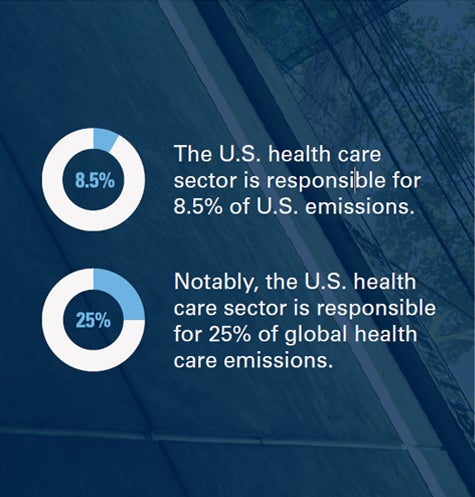
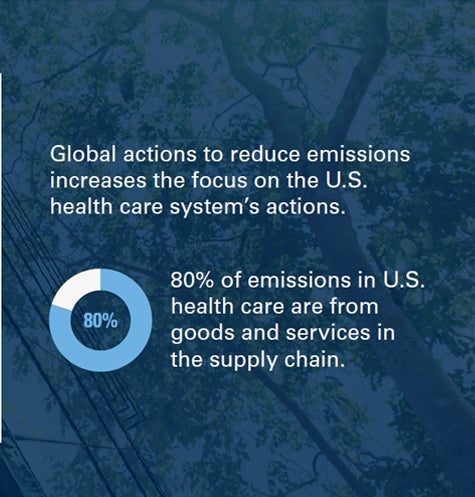
Sections
Mission Readiness
Hospitals are encouraged to view resiliency as a means for protecting human health. Sustainability and Environmental Stewardship aligns with health care mission to serve hospitals’ communities by providing a pathway to take action and plan for environmental risks.
Create Value
Aligning the organization to empower all employees to improve sustainability can:
- Build new relationships among internal functions to reduce waste and increase value.
- Boost employee motivation and improve retention and recruitment.
- Enhance investment returns by better allocating capital for the long term.
Hospitals and health systems committed to sustainability and environmental stewardship strategies could work with department leaders to:
- Understand the importance of sustainability in health care.
- Commit to seeking out opportunities to change current practices.
- Collaborate with stakeholders to review and assess ongoing performance.
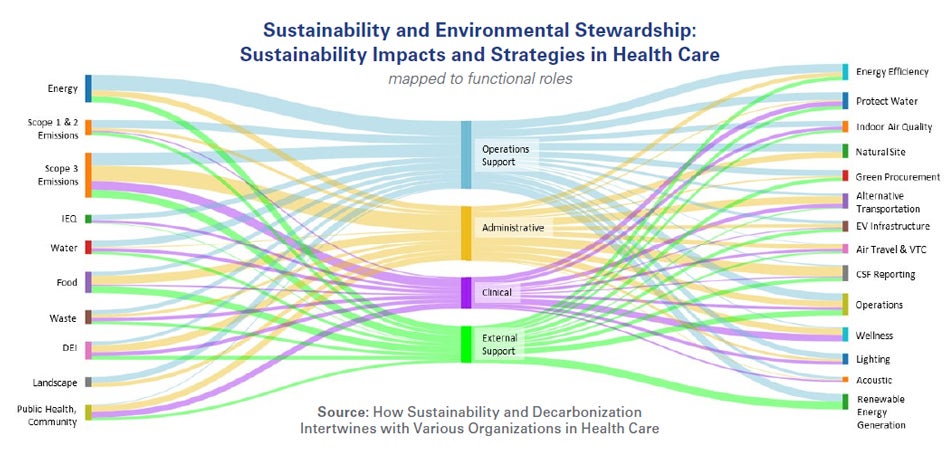
Key Terms and Definitions
Sustainability
- In health care, refers to the integration of environmental stewardship and fiduciary responsibility in health care organizations to support healthy and resilient environments and communities maintained over time.
- Meeting the needs of the present, without compromising the ability for future generations to lead healthy lives.
- Based on a simple principle: Everything that we need for our survival and well being depends, either directly or indirectly, on our natural environment.
- To pursue sustainability is to create and maintain the conditions under which humans and nature can exist in productive harmony to support present and future generations.
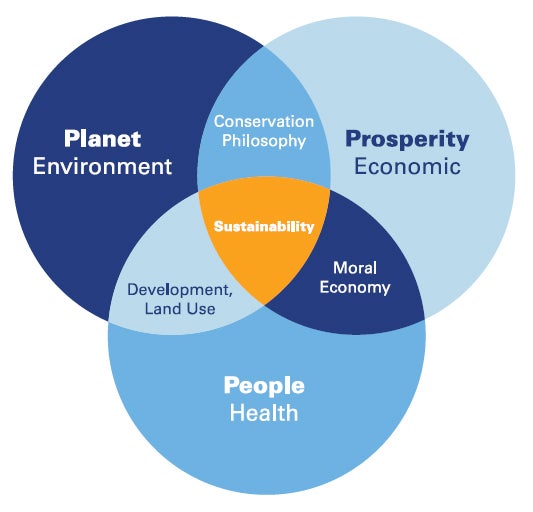
Decarbonization
- The act of reducing greenhouse gas emissions.
Greenhouse Gas Protocol
- Scope 1: Direct emissions
- Scope 2: Indirect emissions
- Scope 3: Purchased goods and services
Hospitals GHG Emissions Impact by Category
Scope 1 Direct emissions emanating directly from health care facilities and health care owned vehicles.
- Combustion of Natural Gas
- Combustion of Diesel Generators
- Emissions from Refrigerants
- Medical Gas System leaks and exhaust
- Landscape and misc equipment emissions
- Fleet Fuel combustion
Scope 2 Indirect emissions from purchased energy sources such as electricity, steam, cooling and heating.
- Emissions from purchased energy
Scope 3 Emissions derived from health care supply chain through the production, transport and disposal of goods and services.
- Water Embodied Carbon
- Building Product/Supplies Embodied Carbon
- Patient Transportation
- Visitor Transportation
- Staff Transportation
- Vendor Transportation
- Equipment Embodied Carbon
- Supplies Embodied Carbon
- Waste
- Pharmaceuticals Embodied Carbon
- Food Embodied Carbon
- Investments
- Emissions of Outsourced Services
Hospital Specific Emissions by Department
- Facilities
- Transportation
- Procurement, Clinicians, Clinical Engineering
- Environmental Services (EVS)
- Pharmacy, Procurement, Environmental Services (EVS)
- Dietary
- Treasury
- All
Net-zero Energy
- On an annual basis, uses equivalent energy from the utility grid that is provided by onsite renewable energy sources.
- Not the same as “carbon neutral."
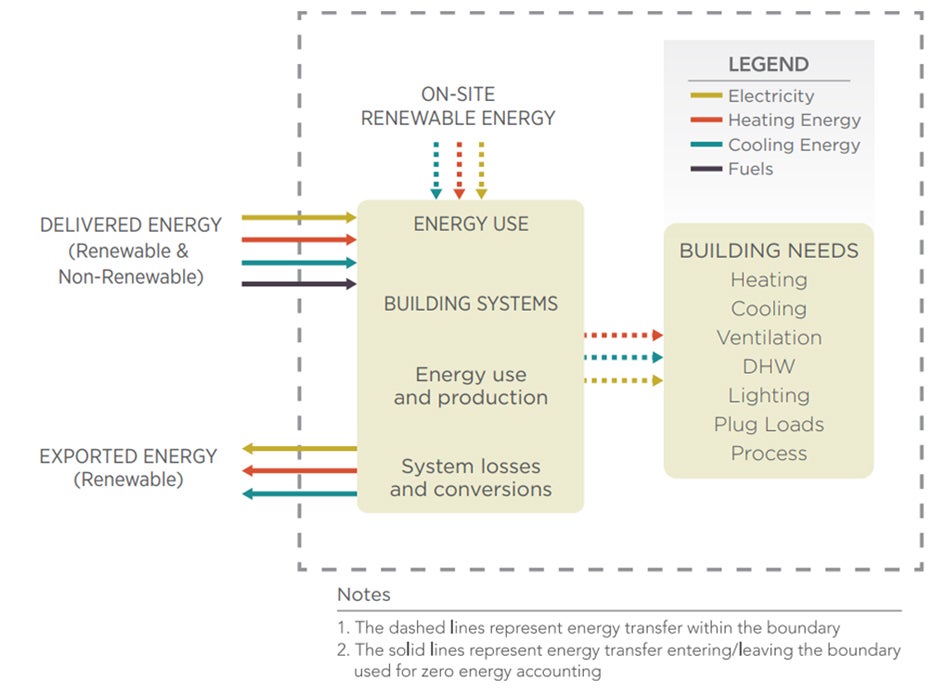
Carbon-neutral
- In addition to energy consumption (scope 1 and 2 emissions), carbon neutrality “includes emissions beyond the entity’s direct control (scope 3 emissions)."
Reference: IPCC AR6 WGIII
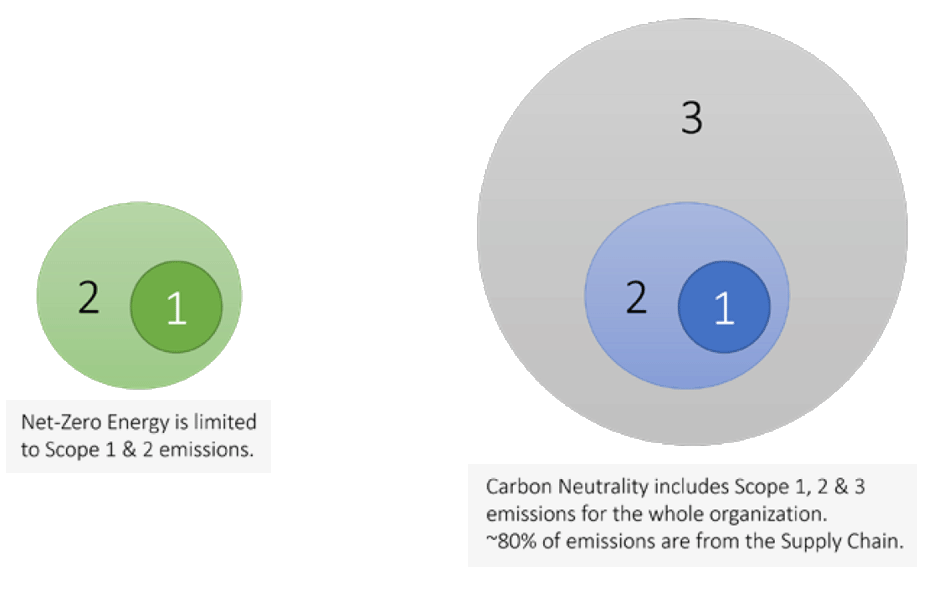
Embodied Carbon
- The greenhouse gas emissions associated with the manufacturing, transportation, installation, maintenance and disposal of purchased products/materials. For example:
- Medical supplies and equipment
- Pharmaceuticals
- Food
- Construction material
Operational Carbon
- The greenhouse gas emissions associated with daily operations. For example:
- Building energy consumption
- Anesthetic gases
- Refrigerants onsite
- Staff commuting
- Business travel
Carbon in Health Care
Emissions are categorized as scope 1, 2 and 3, but can also be analyzed in functional roles:
- Operations
- Energy consumption (scope 1 and 2)
- Refrigerants (scope 1)
- Construction (scopes 1-3)
- Water (scope 3)
- Food (scope 3)
- Waste (scope 3)
- Information and computer technology (scope 3)
- Clinical
- Anesthetic gases (scope 1)
- Medical waste (scope 3)
- Testing and research (scope 3)
- Pharmaceuticals (scope 3)
- Purchased goods and services (scope 3), including medical devices and supplies
- Administrative (all scope 3)
- Business travel
- Lending, banking, investments and insuranc
Note: The figure to the right represents global health care emissions. Scope 3 for U.S. health care is calculated to be 80% of the total carbon emissions.
Carbon and greenhouse gas (GHG) emissions are often used interchangeably. This is because GHG emissions are measured in carbon dioxide equivalent (CO2e), often abbreviated as “carbon."
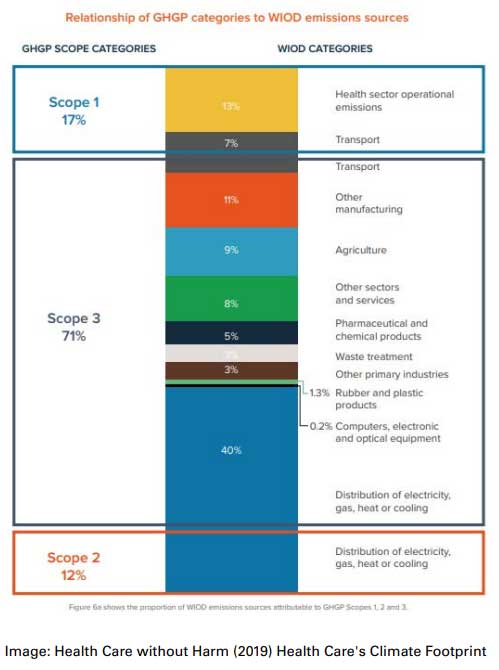

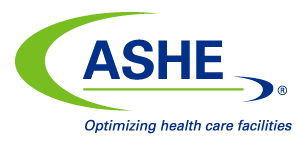

Over 3,500 health care facilities are tracking emissions associated with facility energy consumption in Energy to Care, the American Society for Health Care Engineering’s (ASHE’s) award-winning sustainability program for health care facility management professionals who want to add value to their organizations via an environmental sustainability focus.
The majority of scope 1 and 2 emissions for health care organizations can be tracked in the Energy to Care dashboard, a free tool provided by ASHE.



